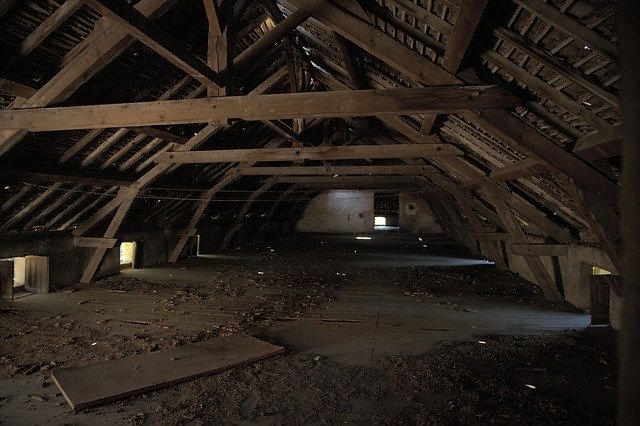If you’ve looked at places where mold is likely to occur in your home or commercial building, you’ve probably seen some information about moldy attics. Attics require proper ventilation and moisture control in order to prevent mold. Attic insulation and mold risk is another consideration.
Attic Insulation and Mold Risk from Installation
One common reason that insulation is a mold risk in attics is because of the way it was installed. It needs to be installed with the backing placed down. This is contrary to what many laymen may think, especially those who have sheetrocked walls during DIY projects where the backing was placed facing the installer. The backing should always be on the warmer side of the wall to avoid moisture from condensation.
The wrong type of insulation can also be applied to the roof sheathing. The correct insulation will not allow water to permeate through the insulation, thus avoiding moisture and mold. If it is simple fiberglass insulation like used on walls and on the attic floor, it is likely to harbor mold.
Mold Removal from Attic Insulation
In many cases, your attic insulation will have to be removed in order to completely remedy the problem. Of course, you must determine the cause of the moisture. The cause may be the improperly installed insulation, but it could be a roof leak.
Humidity should be measured in the attic, and new insulation should not be installed until the humidity is at least below 50% and preferably close to 30%.
Prior to reinstalling attic insulation, the attic surfaces should be chemically treated to stop any mold growth that has infiltrated building materials.
Finally, properly installing insulation is an important final step to keep your home mold-free but also efficient for your heating and cooling systems.
Importance of Hiring a Professional for Attic Mold Removal
In some cases within the home, a homeowner can perform DIY mold removal if done properly and with proper Personal Protective Equipment (PPE). However, this is not the case when you have a mold infiltration in your attic.
First of all, visible mold is not always mold when it comes to insulation. Dust can accumulate and take on a similar appearance. In these cases a mold expert can actually save you a lot of money.
In the cases of actual mold, professionals know how to safely remove the materials and use chemicals to prevent a recurrence. They also prevent you from exposing yourself to mold that can be harmful to your health. You’ll get the mold removed completely, and you’ll avoid any respiratory difficulties.
